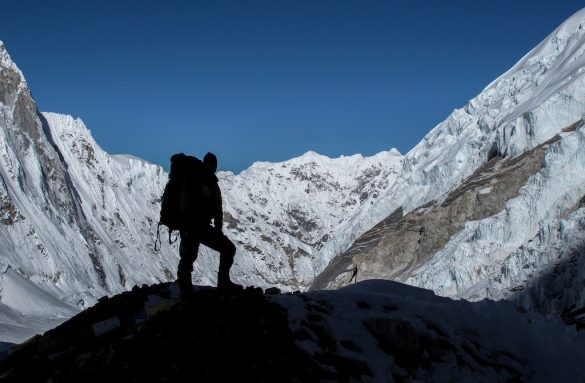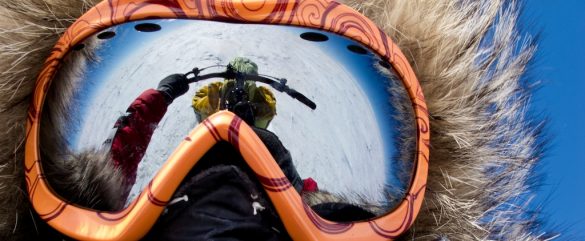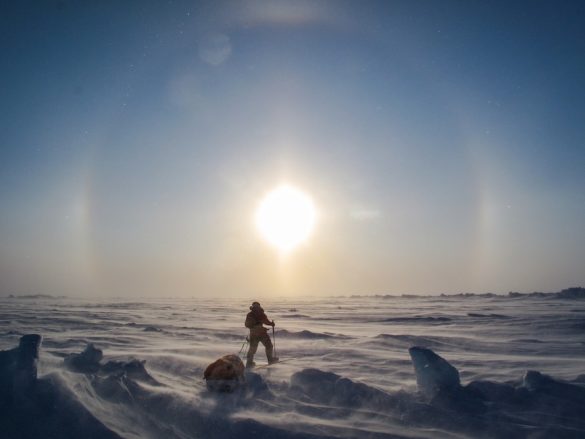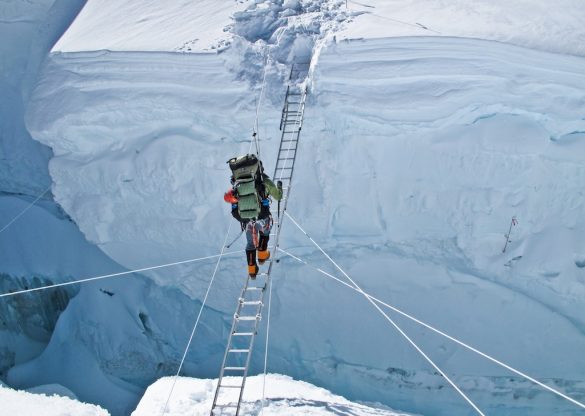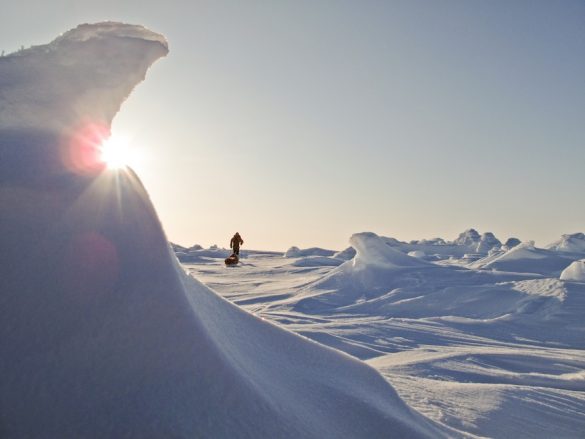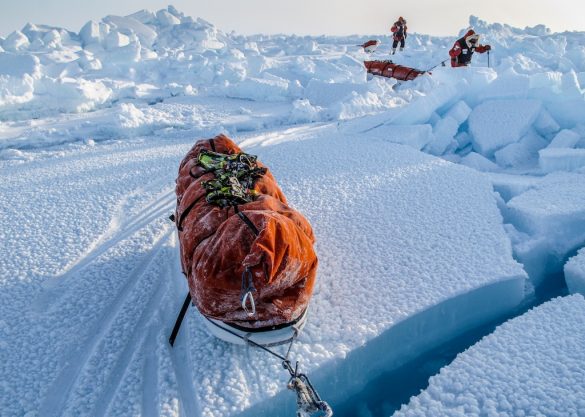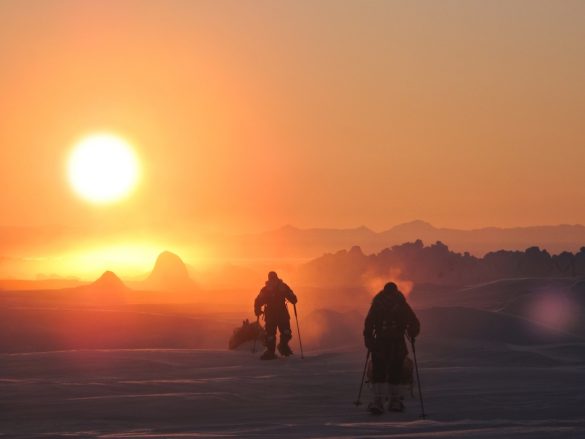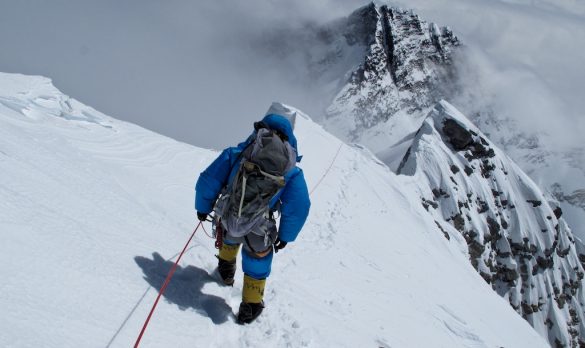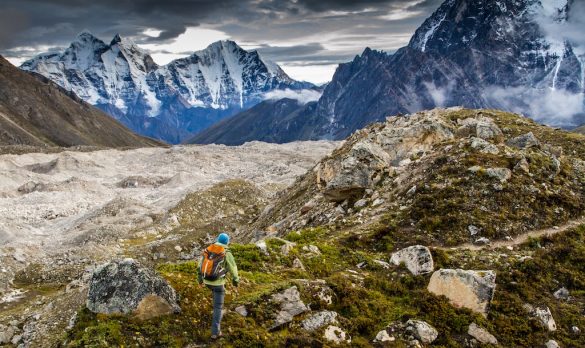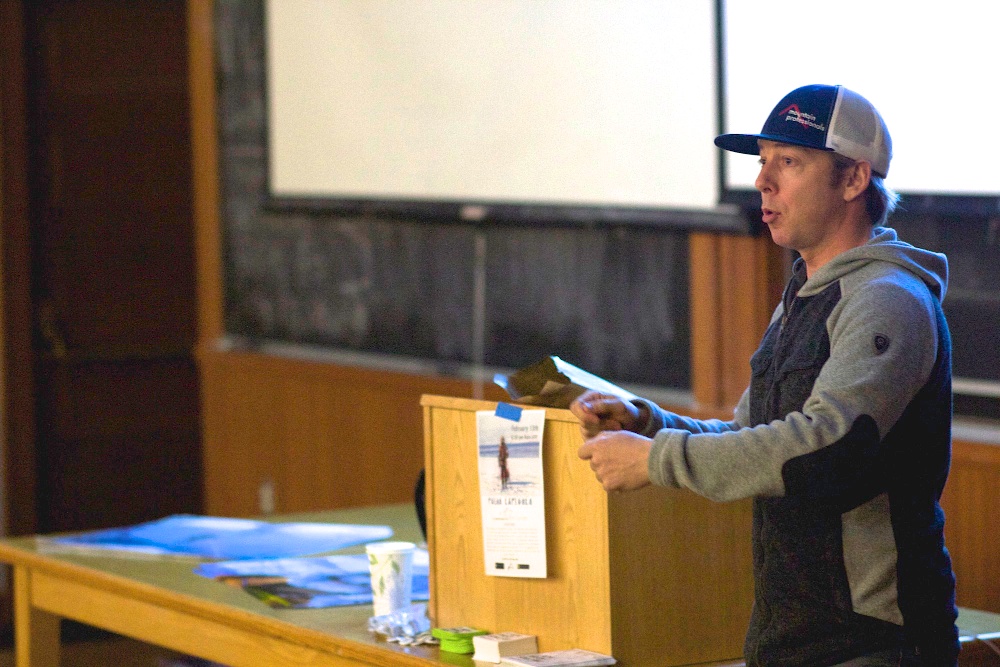
Polar explorer Eric Larson gives a presentation Thursday, Feb. 13, 2014 in Hale Science. (Matt Sisneros/CU Independent)
Eric Larsen vividly remembers waking up from a good night’s sleep into a nightmare.
The renowned Boulder-based explorer was nestled up in a sleeping bag with the exterior of his tent, a fraction of an inch thick, protecting him from the rugged winds and bone-chilling cold of Antarctica. It was also the only thing separating him from a polar bear that was on the hunt for a late-night snack .
When Larsen came to CU to talk about his adventures on Thursday, Feb. 13, he was still in one piece.
About 50 students arrived at Hale Science to listen in awe to his tales of survival. Larsen, invited to speak by the CU Environmental Center, told the audience that somehow he managed to scare the hungry intruder away that night.
His stories, compiled over nearly two decades of traveling to places few people ever see, may not always be applicable to everyday life (“If you don’t shower for about six weeks, you can do pretty much everything you want with your hair”). But the Wisconsin native is most comfortable when he’s uncomfortable.
“For years, I’ve been trying to convince people that being cold is cool,” he said.
Life beyond the point where no life is possible is strenuous, and once the audience listened to his stories and viewed photography and video snippets captured at some of the most remote places on the earth, he managed to make his case.
COLDER – the official trailer from ELExplore on Vimeo.
In 2010, he was the first human to reach the “three poles” – the North Pole, Antarctica and Mount Everest – all in one year. Two years later, he attempted to bicycle to the South Pole, but fell short, and he’s been on countless other trips to some of the coldest places on earth since he took off on his first adventure in 1995.
His expeditions are far from being simple, free-spirited outdoor romance. Things as simple as eating a granola bar are an ordeal when the food becomes rock-solidly frozen. Larsen and his fellow adventurers each devour up to 8,000 calories a day when facing gripping cold and forbidding landscapes.
Pulling a 350-pound sled will cause his body temperature to soar amidst the aches of moving forward slowly, step-by-step. At the same time, windchill of up to minus 60 degrees can cause instant frostbite and serious hypothermia as soon as he briefly stops to gasp for some air.
Still, the luxuries of the 21st century provide today’s explorers with some helpful tools on their journey, like satellite phones. The latest models can be used for more than just a desperate call for help – they can instantly share success stories with the whole world.
How? This is the very first tweet from the top of the world, Mount Everest.
Everest summit! -Sent with @DeLormeGPS Earthmate PN-60w
— Eric Larsen (@ELexplore) October 15, 2010
On Feb. 28, Larsen and his travel companion Ryan Waters head far north once again. They want to cross the more than 500 miles of Arctic ice from Ellesmere Island in Canada to the geographic North Pole in less than 49 days, breaking a world-record set in 2006.
“Life is just time between expeditions,” Larsen said.
Contact CU Independent Copy Editor Lars Gesing at lars.gesing@colorado.edu

